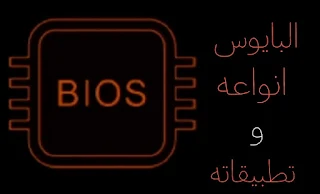BIOS is an abbreviation for the term "Basic Input/Output System", which is a program integrated into the motherboard chip that acts as a bridge between the basic hardware in the computer and the operating system. The BIOS is a programming interface that allows the user to configure and manage the settings of various devices in the computer, such as the processor, memory, hard disk, display card, and wireless networks.
The BIOS is loaded into temporary memory (RAM) when the computer is turned on and controls the monitoring and activation of basic hardware before the operating system boots. The BIOS performs self-tests (POST) to verify the integrity of the hardware and its settings, and it also loads the operating system from various storage media such as the hard disk or CD-ROM.
BIOS settings are very important for computer performance, as the user can modify hardware parameters, control fan speed, power management, and other options. BIOS can also provide advanced features such as virus protection and the ability to boot from external storage media.
Over time, BIOS has evolved to become more complex and diverse, and modern BIOS systems such as UEFI (Unified Extensible Firmware Interface) have emerged that offer a graphical interface and additional features.
It can be said that the BIOS is a crucial part of the computer, as it can modify hardware settings, operate the system, and provide additional security features. It is recommended to be careful when modifying the BIOS settings and to follow the instructions provided by the manufacturer to ensure that the computer works properly and properly.
The main differences between traditional BIOS and UEFI.
There are several differences between the traditional BIOS and the UEFI system. We mention the most important main differences as follows:
user interface:
The traditional BIOS is a simple keyboard-controlled text interface. The UEFI system provides a more detailed and easy-to-use graphical interface, very similar to the operating system interface.
Capacity and capabilities:
UEFI provides greater capabilities and flexibility compared to traditional BIOS. UEFI can support modern file systems such as GPT (GUID Partition Table), while traditional BIOS is based on the older MBR (Master Boot Record) partition system.
Ability to fully exploit the hard disk:
Traditional BIOS suffers from limitations in the ability to boot the system from a hard disk with a size exceeding 2 TB. As for the UEFI system, it can handle larger hard disk sizes and take full advantage of them.
Speed and performance:
The UEFI system is considered more efficient and faster at booting compared to the traditional BIOS . UEFI is loaded directly into RAM rather than running from ROM like a traditional BIOS, which reduces boot time and increases system speed.
Safety:
UEFI provides more advanced security features such as Secure Boot and digital signature, which help protect the system from malware and unauthorized tampering.
Device compatibility:
UEFI provides better compatibility with newer devices and new hardware technologies such as SSDs and USB 3.0 .
Applications for using the BIOS .
The BIOS system is used in several different fields, which we mention as follows:
1. Use of bios in industry:
The BIOS is used in industrial control systems and robotics, where its role is to load the operating system and set the basic devices to operate efficiently.
2. The use of bios in medical fields:
Complex medical devices rely on BIOS to operate their systems and adjust their devices. For example, vital monitoring devices and medical imaging devices rely on the BIOS for smooth and reliable operation.
3. Using BIOS in automation:
In the field of automation and process control, BIOS is used to operate industrial control and monitoring systems, allowing automated processes to operate with high efficiency.
4. Using BIOS in communications:
Communications devices such as routers and networking devices rely on the BIOS to run the operating system and configure devices to connect to the network properly.
5. Using BIOS in storage and servers:
In the field of storage and data servers, BIOS is used to configure and operate storage devices and ensure smooth and secure server boot-ups.
6. Using BIOS in specialized devices:
Specialized devices such as industrial plotters and scientific instruments rely on the BIOS to operate their system and adjust their devices to perform specific tasks.
Types of BIOS
1. Traditional BIOS:
It uses a simple text interface to configure the system and manage basic settings such as system date, time, and device boot order. It is stored on a ROM (Read-Only Memory) chip in the motherboard.
2 . UEFI (Extensible Programming Interface):
Provides a more detailed and flexible graphical interface than traditional BIOS. Enables features such as support for large disks (more than 2 TB), secure boot and fast boot. Allows drives with GPT (GUID Partition Table) to be installed instead of MBR (Master Boot Record).
3. Coreboot:
It is based on open source software and aims to provide a flexible and customizable BIOS environment. It is mostly used in open source devices such as Chromebooks.
4. Open Firmware:
It is mainly used on open source systems such as older Macs and some PowerPC machines. Provides a customizable interface and support for advanced features such as networking and storage.
5. Custom BIOS:
BIOS development is customized for specific devices or applications, such as automation devices or medical devices. It is designed to meet application-specific performance and security requirements.
Do not forget to visit our Youtube channel


إرسال تعليق